If you think sex toys were invented in the 20th century, think again! Below is a brief history of how sex toys have played a significant role worldwide for millennia.
This article has “brief” in the title, but it turned out over 5000 words. This is why here in the intro, I’ll include quick links to the different periods I have covered and a very short summary of some facts.
The sex toys in different ages:
Prehistoric toys (or tools?)
28,000 BC
The oldest sex toy known to men is dated around 28,000 BC. It is a paleolithic stone phallus discovered at Hohle Fels Cave, southwestern Germany, by the archeologist Petra Kieselbach. It is speculated that it was used as a dildo, an idol sculpture, or more of a tool.
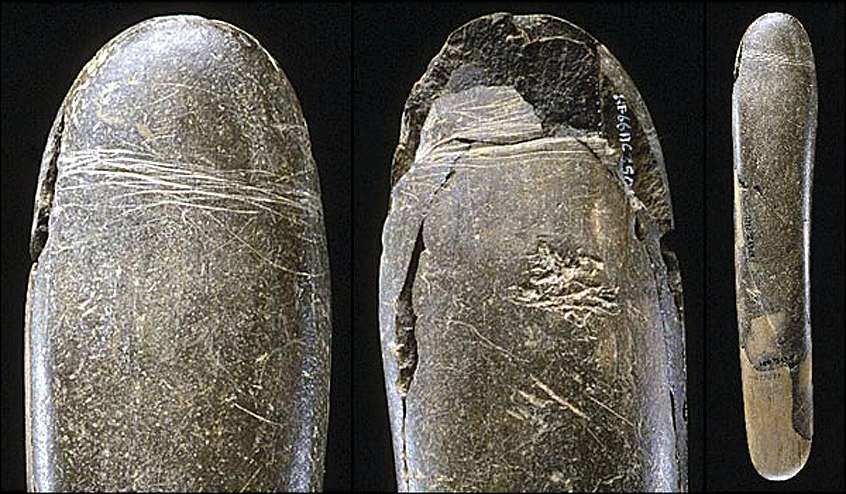
This highly polished siltstone phallus measured 19.2 cm / 7.56 inches in height and 2.8 cm / 1.1 inch in width and was reassembled from fourteen fragments. Close-up images of opposite sides reveal etched rings around the head and markings that could have been created through knapping flint.
Professor Nicholas Conard from the Early Prehistory and Quaternary Ecology department at Tübingen University in Germany led the research.
‘Female representations with highly accentuated sexual attributes are very well documented at many sites, but male representations are very, very rare,’ explained Professor Conard 1.
However, the shape of a real size penis, the way it is polished, and the material it is made of (siltstone) lead the scientists to believe it was used as a sex toy 2.
The archaeologist Paul Mellars of the University of Cambridge, in England, commented for Nature magazine 3 that “The possibility that these could represent ‘girls’ toys,’ as one first-year student once hesitantly expressed it, should perhaps not be dismissed.”
28,000 BC – 11,000 BC
Archaeological evidence from various excavations in France and other parts of Europe suggests that phallic objects were created using antlers, bone, and stone.
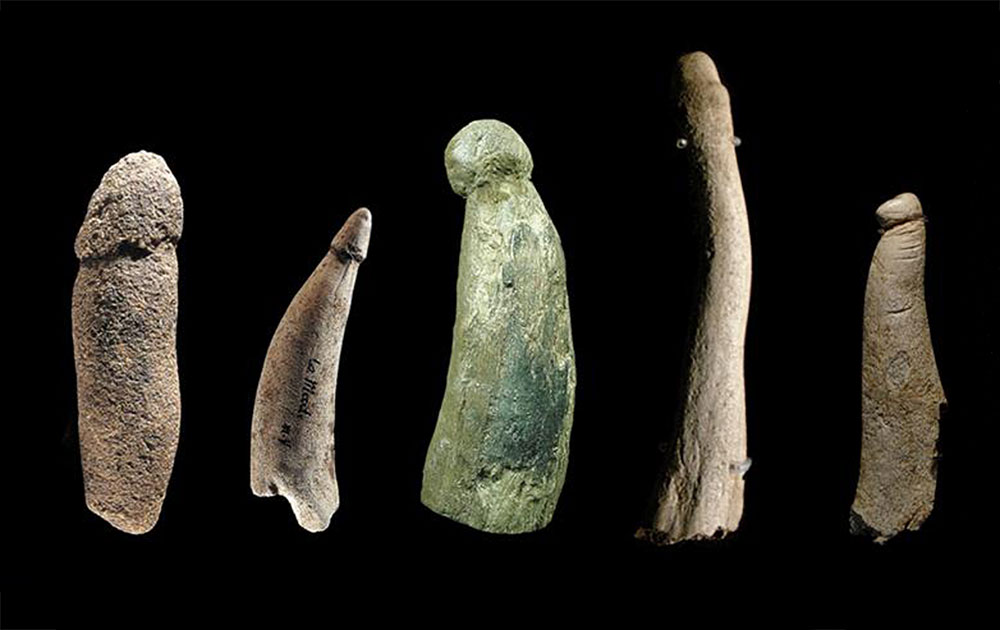
While the purpose of these artifacts is unknown, it is clear that they had some significance to the people who made them; rather than being considered waste, the materials could have been used to create spear points or pendants. Theories exist that these items may have served as dildos or domestic masturbating devices but may also have been employed in rituals 4.
The archaeological record provides evidence of phallic decoration with dots and lines practiced in the European Palaeolithic period, between 28,000 to 11,000 BC. These designs were made on the surface of the penis for identification or ornamental purposes and included scars, holes, and marks intentionally created by prehistoric people. It is unclear where these rituals originated, but they have been performed in France and Eastern Europe.
Ultimately, their true meaning and if they were used as dildos, tools, or ritual items remains a mystery. Though they provide insight into the importance of erections in the minds of our ancestors.
The archaeologist Timothy Taylor has further hinted at the idea of Ice Age sex toys in his book Prehistory of sex 5, noting: “Looking at the size, shape, and – some cases – explicit symbolism of the ice age batons, it seems disingenuous to avoid the most obvious and straightforward interpretation. But it has been avoided.”
6,000 BC
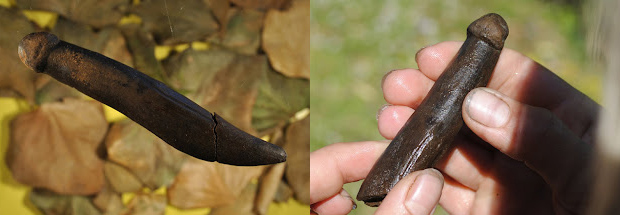
Recent excavations at the Motala site in Östergötland, Scandinavia, have revealed a wealth of Mesolithic artifacts, including bone and wood objects rarely preserved elsewhere, dating from 6,000 to 4,000 BC.
Among these artifacts is a 12 by 2 centimeter (4 by 0.8 inches) bone object, which has been suggested to be a dildo. While its size may not be impressive, it is possible that those living at the time would have seen the penile similarities just as easily as we do today.
It is also possible that this could be a pressure-flaker for fine flint knapping, indicating how such work was conceptualized regarding gender during that period.
“Your mind and my mind wanders away to make this interpretation about what it looks like – for you and me, it signals this erected-penis-like shape,” said archaeologist Göran Gruber of the National Heritage Board in Sweden, who worked on the excavation. “But if that’s the way the Stone Age people thought about it, I can’t say.”
Ancient sex toys
3000 BC – Ancient Egypt
In other ancient civilizations, artificial phalli were in use. But, although the Egyptians manufactured similarly shaped objects, there is nothing to indicate that they were ever used for anything but votive gifts 6. Ancient Egyptian paintings dating back to 3,000 BC depict women wearing phallic objects and paying tribute to gods.
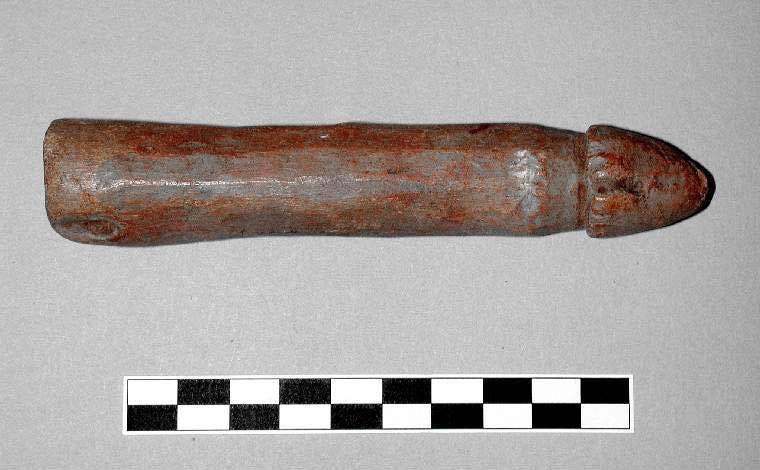
This wooden phallus from the New Kingdom (18th-20th Dynasty, ca. 1550-1070 BC) is an obvious reference to fertility, probably left as an individual object rather than being attached to a statue.
In approximately 1150 BC, a draughtsman at Thebes in Upper Egypt created a papyrus scroll containing animal tale illustrations. After completing this section, he drew a vertical line down the length of the scroll. He began work on another subject – an erotic story that had become popular among the locals.
It is uncertain whether this narrative was based on actual events or merely fictionalized; however, when the scroll resurfaced three millennia later, its drawings were open to various interpretations and speculations.
This erotic “cartoon” suggests that someone was exploring the concept of artificial stimulation. The female figure depicted painting her lips is positioned atop an inverted vase with a pointed base while her partner points his finger toward her intimate area. It appears to be clear what the intent of this arrangement was.
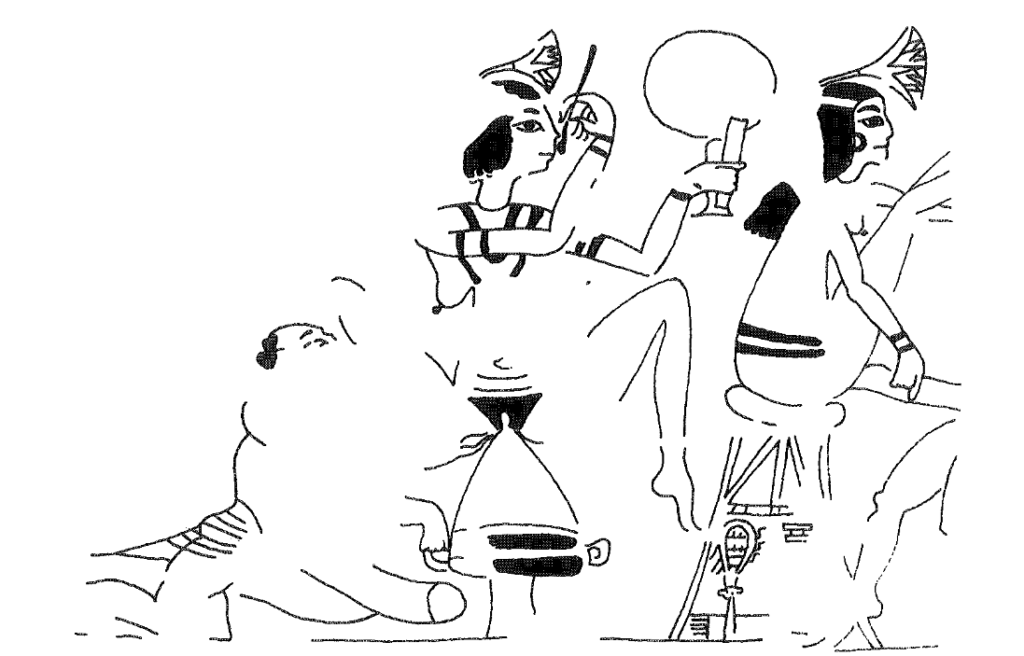
592 BC, 570 BC – Ancient Babylon
One of the oldest records of sex toys being used is in the Bible. The prophet Ezekiel wrote his book from 592 to 570 BC while he was in captivity in Babylon.
Ancient Mesopotamia had “low morals” and “foul customs,” according to Herodotus 7. He chronicled the “ugliest custom” in Babylon: the widespread practice of the so-called “sacred prostitution” in the Temple of Ishtar, where all women were required to visit at least once in their lifetimes and offer themselves to a stranger in exchange for money.
Back to Ezekiel, what he wrote in this book Ezekiel 16:17, the translastion from the King James Bible says:
“Thou hast also taken thy fair jewels of my gold and of my silver, which I had given thee, and madest to thyself images of men, and didst commit whoredom with them”
The Hebrew makes it clear you should be picturing:
- phallic symbols
- that were re-molded from gold and silver jewelry
- being used for sexual gratification
Ezekiel employed a vivid metaphor to illustrate the magnitude of Jerusalem’s infidelity – comparing it to a wife who would take her husband’s(God) gifts, fashion them into an artificial phallus and use it for sexual gratification rather than remain faithful.
But to apply such a metaphor, he was familiar with women’s use of dildos.
520 BC – Ancient Greece
The Ancient Greeks are renowned for their embrace of sexuality. The first documented use of a dildo comes from Ancient Greece, where merchants sold a tool called an olisbos.
Olisboi (plural for olisbos) was a type of dildo-like object commonly found in Ancient Greece, which was typically crafted from softened leather, then stuffed with wool and polished to ensure a smooth finish.
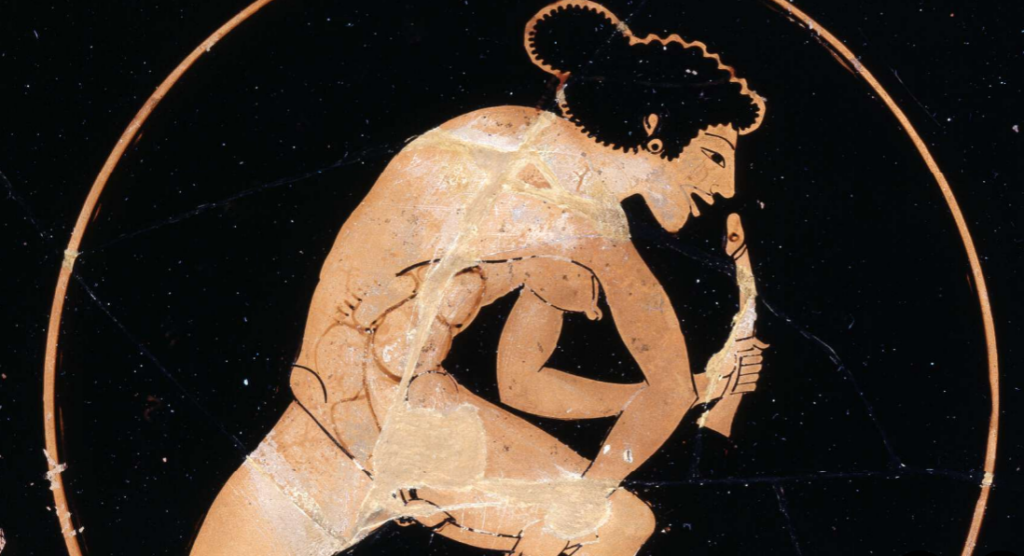
The cup above was made in Attica, Greece, around 520 BC. It is probably a representation of a courtesan or entertainer performing a sexually-explicit show. She is naked and holding two dildo-like objects in both hands.
While archeologists found a lot of prehistoric dildo-like objects, their use remains speculative. While with the ancient greeks, there is art confirming the explicit sexual use of the olisbos.
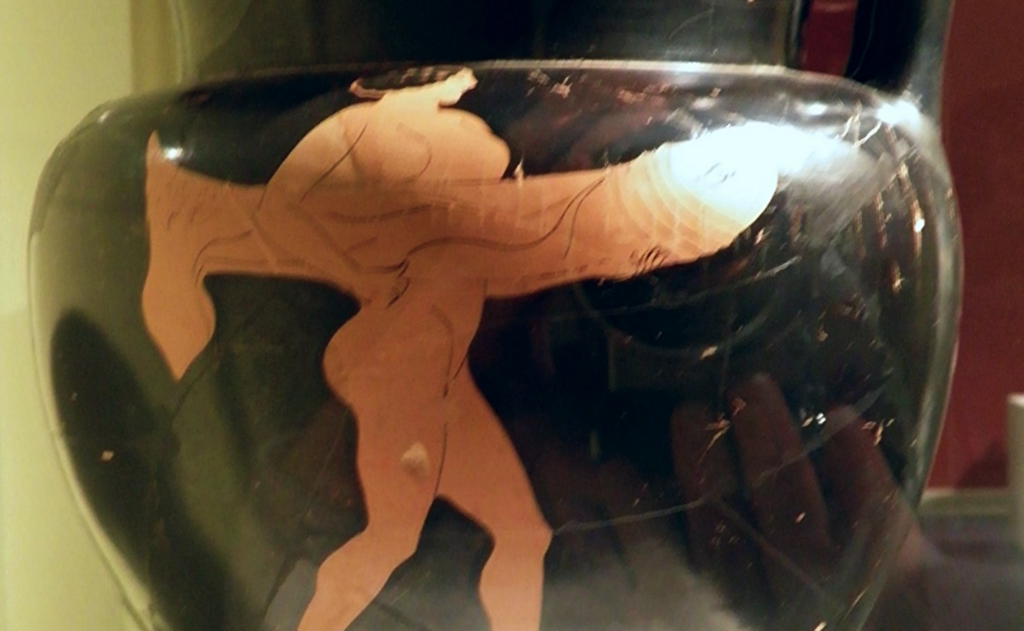
This vase from 470 BC features a rare image and has been interpreted in various ways; some suggest it depicts a procession during the Haloa festival in Eleusis near Athens, where phalli were carried as offerings to Demeter and Dionysus to invoke fertility. Others posit that the female figure may be a hetaera or prone (prostitute) with an olisbos, an artificial phallus.
It is speculated that this colossal phallus was made out of bread for a festival. In 1986 while studying the Ancient Greek lexicon of Hesychius, written around 500 AD, professor Oikonomides found the term olisbokollix. Kollix refers to bread, Olisbos refers to a dildo, so a bread-dildo. However, whether it was used as a masturbator or merely a metaphorical joke based on the shape of a loaf of bread remains speculation.
Classical scholars acknowledge that the Greeks had at least eight different words to refer to dildos, with olisbos being the most common. As Max Nelson 10, this term translates to “leather penis,” “to glide,” or “to slip,” and they also used the word toy.
It is safe to assume that the ancient greeks coined the term ‘sex toys.’
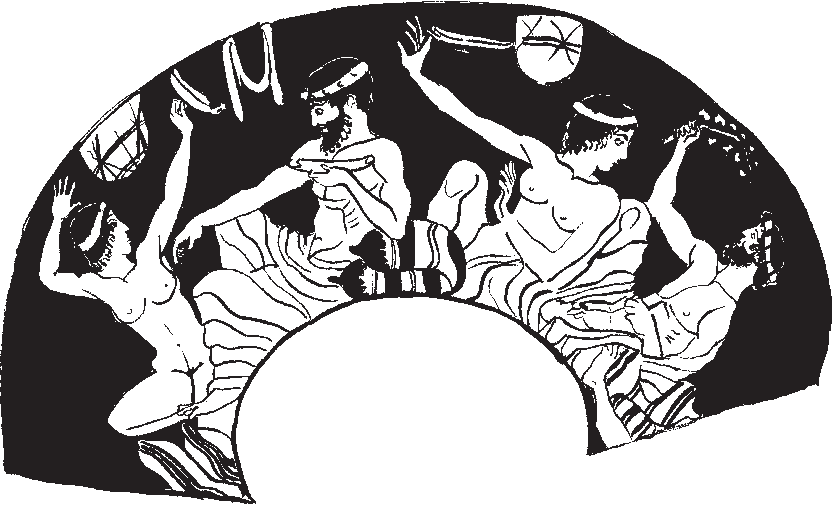
In what is now Balat, Turkey, Miletus was known as the olisbos production and distribution center. Aristophanes’s play Lysistrata 11 from 411 BC was the first record that hints that men were replaced with phallic devices and the olisboi were used for masturbation.
In the play, Lysistrata proposes a radical solution to ending the Peloponnesian War: the women of the city go on a sexual strike. One woman, Calonice, expresses her concern that the sex strike may not be successful and she will remain without a sexual outlet. Lysistrata suggests an alternative form of satisfaction with an olisbos (dildo) if their efforts prove ineffective.
A third-century-BC text, Mimes of Herondas 12, documents a conversation between two women, Metro and Koritto.
“But the things he makes, all of them, are worthy of Athena; you would believe that you could see her hand, instead of Kerdo’s. He came here with two, Metro! When I saw them, my eyes nearly popped out with desire. The men certainly have no rams like those… And that’s not all: their smoothness – a dream; and the stitches, of down, not of thread! Hunt as you might, you could not find another cobbler so kindly disposed towards women.”
To stop for a moment on Koritto’s comment that “The men certainly have no rams like those” reveals one of the things that would follow dildos from ancient to early modern and even modern times—male anxiety over dildos being used to replace them. This remains a near-constant anxiety until even in modern-day Texas, where it is still illegal to possess or promote the use of (six or more) dildos.
Around 350 BC, about the time the olisbos gained popularity, are the first mentions of olive oil used as a lubricant. The scripts mention it was used on the body parts that did not lubricate naturally. And ancient greeks were not shy about anal sex.
Aristotle wrote in The History of Animals 13 that olive oil was believed to be a contraceptive, noting that “if the parts be smooth, conception is prevented.” Although incorrect, his enthusiasm for this belief is commendable.
400 BC, AD 200 – Ancient India
Vatsyayana’s compilation Kama Sutra, the world’s oldest treatise on sex and its pleasures, contains numerous references to sex toys. Here is an interactive Kama Sutra original 14 if you are curious.
The section entitled Aupanishadika (occult practices) describes a variety of apadravya (apparatus) used for sexual intercourse, which were crafted from wood, rubber, gold, silver, copper, ivory, and ivory and horn.
Additionally, the text notes that when men have no sex partner, they may satisfy themselves “with dolls.” So this is one of the oldest references to using sex dolls.
The Kama Sutra provides detailed descriptions of the shapes and sizes of these sex aids, ranging from rounded sticks to curved sticks in the shape of mortars, objects shaped like flower buds, to elephant trunks. It also mentions artificial sex organs fashioned from “hollowed out pumpkins” and “bamboo moistened with oil and ointment.”
Moreover, one of the first treatment options for erectile dysfunction (ED) was detailed in the Kama Sutra, detailing dildos and penis extensions made of wood or reeds tied to the waist. Those were the equivalent of the modern-day strap-on.
Here is also the first mention of penis implants. Artificial penile nodules are inert objects inserted beneath the skin of the penis to enhance the pleasure of female/male sexual partners during intercourse.
200 BC, AD 200 – Ancient China
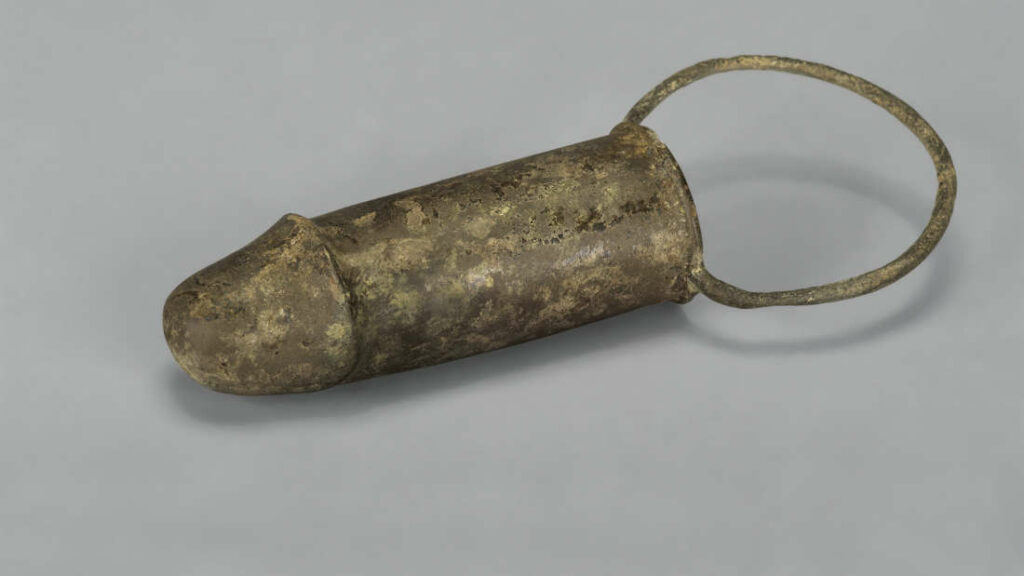
Life during ancient China’s Han dynasty (206 BC to AD 220) appears to have constantly swayed between the strangely familiar and the oddly eccentric, as these newly revealed artifacts show.
The discoveries were unearthed in 1995 and 2011 around the Jiangsu province, near present-day Shanghai, exploring the tombs of 2000-year-old aristocrats, wealthy elites, and royalty. Among their loot was a wealth of art and objects detailing their everyday existence, from vessels and ceramics, urinals and loofahs to bronze dildos and jade butt plugs.
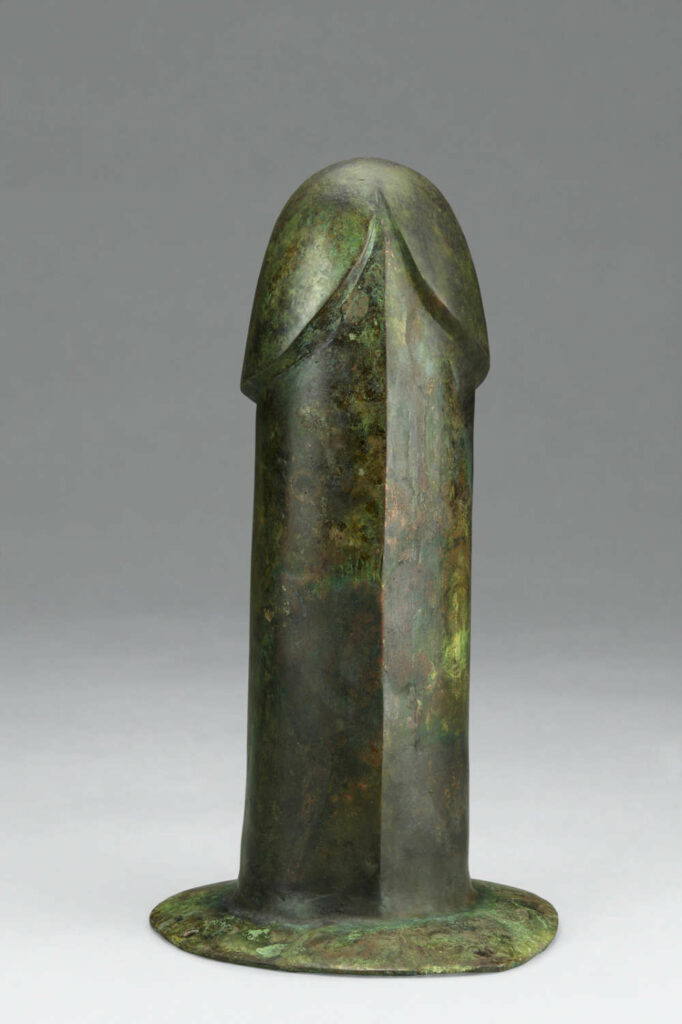
Outside of the realm of death, the elite of the Han dynasty was far from stuffy old aristocrats, either. The excavations also revealed two hollow bronze phallus-shaped objects that are believed to have been worn and used during sex to enhance the experience. They also found a trove of wine vessels, indicating that indulgence in the body’s desires and pleasure often played a central role in this highly spiritual culture.
“Useable bronze dildos are still relatively rare finds, though far from unheard of, and they are occasionally found in elite tombs,” Zhang added. “They were all definitely made for use, and we can speculate based on their various bases how they were worn. They’re all bespoke, and the ones we have here might have been laced into place with leather or silk thongs, though it’s not clear if they were designed for men or women — they’re not heavy at all — though the phallus without the ring form was likely for a man since it was found in a king’s tomb.”
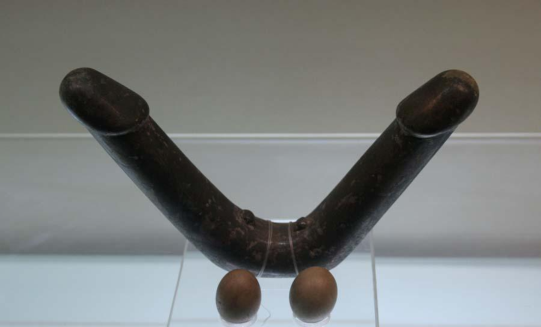
An interesting find is this double dildo from the tomb of prince LIU Sheng 劉勝 (ob. ca. 113 BC, Han dynasty) with two stone eggs attached. These could have been used to train these muscles independently of a partner. Homosexuality was widely accepted during the Han dynasty, so this dildo was most likely used in lesbian sexual acts.
27 BC, AD 476 – The Roman Empire
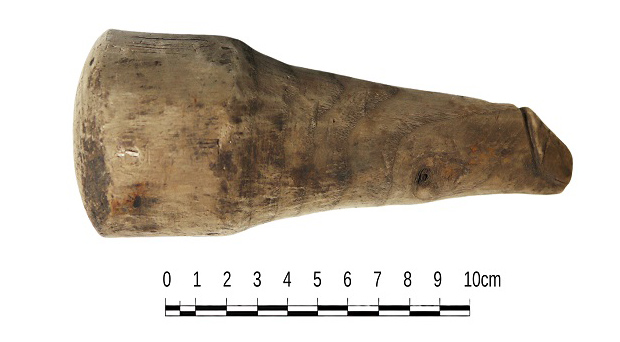
Phalli were widespread across the Roman Empire. Their protective powers are often depicted in frescoes, mosaics, and other decorative objects. Smaller versions made from bone or metal were also frequently worn as pendants around the neck.
Some were used as ritual toys. Brides-to-be performed a ceremony in honor of Mutunus Tutunus, the phallic god. This ritual involved the bride losing her virginity by penetrating herself with a divinely symbolic dildo before the wedding.
The research team posits that the artifact, discovered at Vindolanda in 1992, may have had a purpose beyond warding off evil. Analysis of the phallus revealed that both ends were visibly smoother than the rest of the object, suggesting repeated contact over time.
In a discussion paper published in the journal Antiquity 16, the team explores three possible explanations for the life-sized phallus. One of these is that it was used as a sex toy. However, it could be not for pleasure but as an implement to perpetuate power imbalances, such as between an enslaved person and their owner, which is attested by the recurrence of sexual violence in Roman literature.
It is also possible that the ancient dildo was not intended for penetration, as evidenced by the signs of wear on the object’s exterior, which may suggest it was used to stimulate the clitoris.
The second hypothesis is that this object was used as a culinary or cosmetic/medicinal pestle. Its size and shape suggest it may have been hand-held, with the belief that its form would imbue the food or ingredients being prepared with magical properties.
The phallus was a common symbol of protection throughout the Roman Empire. Another possible function of this wooden object was that it might have been slotted into a statue for passers-by to touch to receive good luck or activate protection from misfortune.
500 – 14th century Medieval sex toys
During much of the medieval period, the Catholic church was the primary institution concerned with sexual transgressions in Europe. And according to the church, sex toys were considered “instruments of diabolical operation,” and female masturbation was the “most horrible sin.”
That’s why the primary source of information on sex toy usage from the middle ages are penitential manuals and trial records. While penitential manuals listed what was prohibited, trial records documented what people were accused of.
While penitential manuals begin addressing the topic of lesbian sex as early as the 7th century, the prohibition of the dildos is mentioned in the 8th century English penitential of Saint Bede “If nuns with a nun, using an instrument, seven years’ penance.”
In the 9th century, the Frankish writer Hincmar of Reims expanded on this theme, writing of such women, “They do not put flesh to flesh as in the fleshly genital member of one into the body of the other, since nature precludes this, but they do transform the use of that part of their body into an unnatural one: it is said that they use instruments of diabolical operations to excite desire.”
At the end of the 10th and beginning of the 11th century, the Burchard of Worms 17 created a penance manual with 194 sex-related questions. One of them was: “Have you done what certain women are wont to do, contriving a certain engine or mechanical device in the form of the male sexual organ, the dimensions being calculated to give you pleasure, and binding it to your own or another woman’s pudenda, and have you thus committed fornication with other evilly disposed women or they, using the same or some other apparatus, with yourself?”
AKA, have you made a dildo? Or a strap-on? Have you used it on another woman or yourself? If yes, you deserve penance—only bread and water for three years on fast days.
More details on how the dildos evolved in the Middle ages we get from the church trials.
In the late 13th century, Bertolina of Bologna 18, Italy, was tried for sodomy with other women. An anonymous accuser testified to her public reputation as a sodomite and claimed she had employed a sexual instrument(dildo) with two silk testicles to gratify her female lovers.
Another famous case is the Katherina Hetzeldorfer of Speyer 19. In 1477 she was accused of fashioning a male member out of leather, cotton, and wood. It was a rather exceptional piece, perfect for committing carnal offenses with another woman or roguery, as it was called in this case. While this seems like standard stuff we’ve seen alluded to before, the extremely talented Katherina’s appendage could be used to urinate out of and lie erect when in use or flaccid when not in use.
It is speculated that the poulaine was used as a sex toy. Those are pointy shoes that sometimes could reach 45 cm in length.
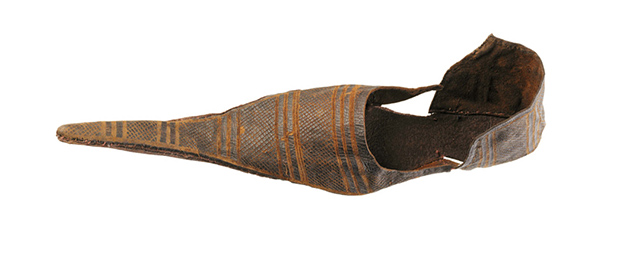
The poulaine was used at dinner parties in the courts and homes of the affluent for under-the-table titillation. The man’s erect poulaine would reach across to lift the skirt hem of the female guest seated opposite him, making its way up as high as the lady would permit. It wasn’t unusual for these dinners to be accompanied by one or several orgasms between the soup and dessert courses. And some women were known to use poulaine for masturbation 20.
Pope Urban V publicly cursed the fashion as “an exaggeration against good manners, a scoffing against God and Church, a worldly vanity, and a mad presumption.”
While using shoes as dildoes sound unbelievable to the modern man, in the book Encyclopedia of Pleasure (Jawāmiʿ al-Ladhdhah), the medieval arab writer Ali ibn Nasr al-Katib advised men: “If she instead is slow in coming, he can carve a wooden sandal into the shape of a penis, and either arouse her with this or his fingers before intercourse. 21”
14th – 17th century – Renaissance
We turn to Renaissance Italy, where olisbos became diletto, from the Italian word for delight or pleasure. The first reference to the modern-day dildo originates in Pietro Aretino’s Dialogues 22, often considered the first literary pornography and Aretino the “father” of pornography. The Dialogues revolve around the life of Nanna, an older courtesan agonizing over what to do with her daughter.
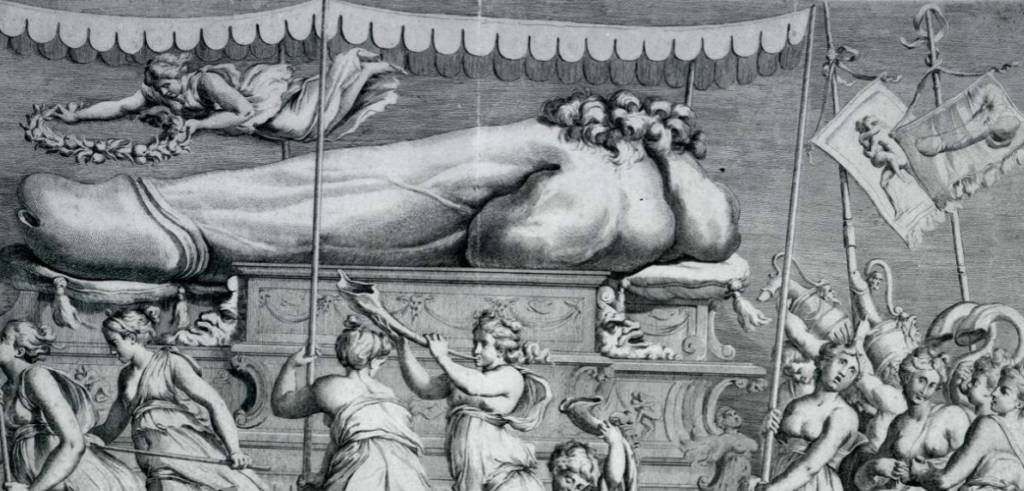
Even with a liberal amount of olive oil as a lubricant (no joke!), the diletto was not as comfortable as today’s models. But as evidenced by today’s booming adult toy industry, dildos continued to evolve and grow in popularity.
Poet Thomas Nashe also addressed the items in the 1592 poem “The Choosing of Valentines, or The Merie Ballad of Nashe His Dildo.” The male protagonist leaves his partner unsatisfied and she takes out “my little dildo…that bendeth not / and stands as stiff as he were made of steele.” Her glass friend “refreshes her well / and never makes my tender belly swell [with a child].”
In 1670, John Wilmot, Earl of Rochester 24, imported dildos into England for his “Ballers” club, a “sexual society.” Customs seized and burned the items due to their controversial nature.
This prompted Wilmot to pen the poem “Signior Dildo” three years later. The poem addressed the theme of women finding greater satisfaction from a dildo than from English men, as the majority of dildos at that point were imported from Italy. This caused anxiety among upper-class English males, who associated Italy with effeminizing eroticism. 25
As journalist Jack Holland wrote in A Brief History of Misogyny 26, this was considered humiliating since it implied an Italian-manufactured object had replaced them.
18th-century sex toys
1734
The clockwork vibrator, or tremoussoir (Exhibit A), was invented in France in 1734 and was available from medical instrument suppliers in the American colonies by the 1750s. 27
The devices were expensive and thus were purchased mainly by physicians, but there was no obstacle in custom or law to their purchase by anyone who could afford them.
1791
1791 saw the publication of “Justine” by the Marquis De Sade, probably the most infamous writer in French literature’s history, who has occasionally been hailed as “the freest spirit which has ever existed.” Marquis de Sade published erotic writings that gave rise to the term sadism – the enjoyment of cruelty- which first became a dictionary in 1834. His writing not only gave birth to the BDSM movement but also popularized many of the bondage toys, such as whips, handcuffs, etc., that are familiar today.
19th-century sex aids
1844
When Charles Goodyear accidentally discovered how to vulcanize rubber, he revolutionized the car world and the sex toy industry. The vulcanization process made rubber more robust and durable and was eventually used to produce condoms, dildos, and other sex toys.
1869
George Taylor, M.D., was the first American to create a steam and foot/hand crank device in 1869. Taylor’s “Manipulator” turned a wheel, which pushed a rod that created a movement on a handle or padded surface. The patient would either hold on to the handle and receive the vibration or oscillations or sit or stand against the padded surface to receive the movement from the machine.
Dr. Maines posits that vibrators are inefficient motors; a motor that is designed to be particularly sloppy will create more vibration than an efficient one. The Manipulator was essentially an inefficient steam engine with an attached dildo. This monster machine hid its engine in another room with the apparatus sticking through the wall.
1883

Dr. Joseph Mortimer Granville patented the first electromechanical vibrator. Originally called a percussor or, more colloquially, “Granville’s hammer,” the machine was manufactured and sold to physicians to relieve muscle aches.
At least a dozen models were available to the medical profession. There were musical vibrators, counterweighted vibrators, vibratory forks, undulating wire coils called vibratiles, vibrators that hung from the ceiling, vibrators attached to tables, floor models on rollers, and portable devices that fit in the palm.
The Hysteria myth
Rachel Maines argued that medical practitioners of the time utilized technology to induce a “hysterical paroxysm” in their female hysteria patients. However, this claim has been critiqued by academic researchers who have examined the primary sources from Maines’ book and found no evidence that physicians ever used electromechanical vibrators for such purposes.
In fact, Granville “argued specifically that it shouldn’t be used on hysterical women.” In his 1883 book, Nerve-Vibration and Excitation as Agents in the Treatment of Functional Disorder and Organic Disease 28, he wrote, “I have never yet percussed a female patient … I have avoided, and shall continue to avoid the treatment of women by percussion, simply because I do not wish to be hoodwinked, and help to mislead others, by the vagaries of the hysterical state …”
1880s
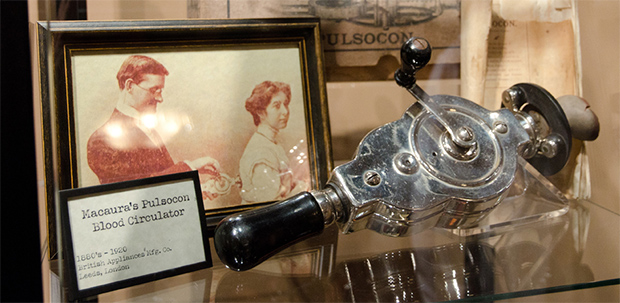
The Macaura’s Pulsocon Hand Vibrator, developed in the 1880s and sold until the early 1900s, was a complex hand-crank vibrator which could produce up to 5,000 vibrations per minute. While it may resemble a tool of torture, this device required considerable effort to use, as one had to hold an end and manually turn a crank handle while placing the other end onto their body. It was advertised as a self-administered treatment for various ailments.
1890s
Saw the advent of the motion picture, and it wasn’t long before early filmmakers began producing the very first porno flicks. Some early films included shots of women masturbating with various sexual aids of the time and included strap-on dildos and massagers.
20th-century
1900 – 1920
By the turn of the century, there were more than 20 vibrator models available, running on electricity, batteries, foot power, or water power. The prices could vary from $15 to $200 for the Cadillac of the vibrators, the Chattanooga.
The vibrator was the fifth household appliance to be electrified, ten years before the vacuum cleaner and the iron. Most of these devices were advertised in respectable women’s magazines such as Modern Priscilla, Women’s Home Companion, McClure’s, and Good Housekeeping.
1917 saw the introduction of K-Y Jelly personal lubricant. At the time, it was designed to aid physicians performing pelvic examinations, a function it still serves today. However, it wasn’t until 1980 that you could buy KY Jelly over the counter.
1930
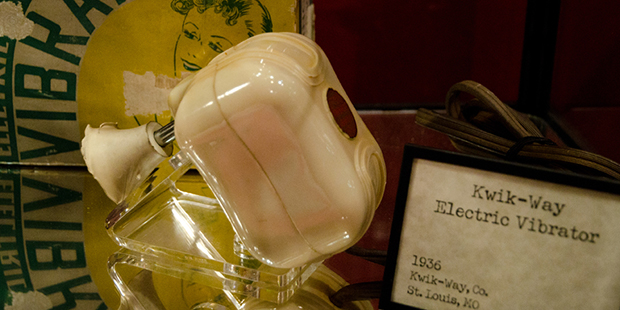
As vibrators began to appear in more and more pornographic movies, it became harder and harder for manufacturers to advertise these devices as though they were simply massagers. Slowly but surely, they disappeared from reputable magazines and mail-order catalogs of the day.
With the 1930s came the discovery of rubber latex, which is tapped from the Hevea tree. This type of rubber has the advantages of being softer, lighter, and more pliable than vulcanized rubber and eventually revolutionized condoms and diaphragms. It also led the way to develop the still popular latex sex toys.
1952
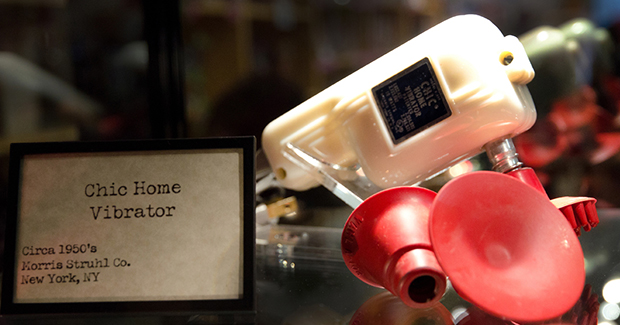
In 1952 the American Medical Association finally declared that hysteria was not an ailment. The downside was that the vibrator would no longer be seen as a medical device. It could no longer hide its true purpose.
1971

In 1971 Betty Dodson began to teach masturbation workshops, focusing on how to use a vibrator. Her weapons of choice back then were two electric vibes, the Prelude, and the Panabrator. Nowadays, Betty Dodson’s reputation and her love of the Magic Wand vibe are nearly legendary in the sex toy world.
1972
Gosnell Duncan pioneered the formula of the body-safe silicon with help from a General Electric chemist.
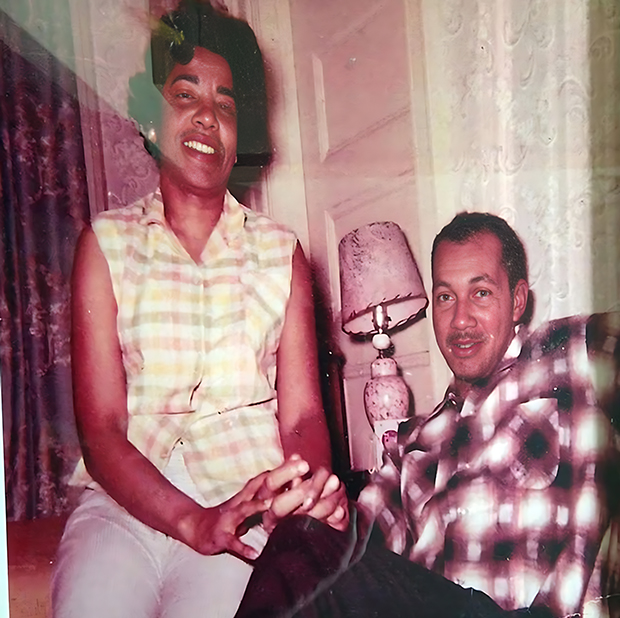
In 1965, Duncan had an accident and was paralyzed from the waist down and left impotent. Duncan, feeling unsatisfied, explored the limited options available to him in 1965 for alternative penile prostheses.
“In the 1970s…most dildos were made of heat-treated rubber and would melt with heat,” Duncan said. “I wanted to have a product that was different…. Something that…you couldn’t [melt] by washing and cleaning it.” Besides the melt factor, he found many dildos were also made of irritating materials and had strong chemical odors that people were often sensitive to. 30
While working as an auto mechanic, he was intrigued by the heat-resistant properties of silicone and its lack of strong chemical odors. This prompted exploration into its potential use in producing dildos that could be safely shared between partners due to its ability to withstand boiling water sterilization. The only obstacle was that the silicone used in automobile parts was unsuitable for body contact.
Duncan established contact with General Electric which had been producing silicone at that time. The company referred him to one of their chemists. They corresponded over nine months while attempting to formulate the ideal silicone; it needed to be smooth, resemble flesh, and be safe for insertion into the body.
Eventually, they created the desired compound, and Duncan founded a dildo laboratory in his basement. These silicone dildos were then sold under the name Paramount Therapeutic Products. (Later renamed to Scorpio Products)
Duncan initially focused on selling his dildos to people with disabilities, yet he could not profit from those sales. Consequently, Duncan contacted the renowned feminist Dell Williams, the founder of Eve’s Garden sex toy store.
Duncan’s initial design of the dildo was made to resemble an anatomically correct penis, featuring a head, veins, and realistic coloring. However, the feminist Williams refused to carry any product resembling a penis. Considering her feedback, Duncan created The Venus, a simple silicone dildo resembling a finger that was body-safe, soft, heat-resistant, and available in light pink and chocolate brown.
1977

In 1977, sexual therapist Joani Blank opened the first store dedicated to vending vibrators in a women-centered, sex-positive environment called “Good Vibrations.”
The late 1990s
Alabama follows Georgia’s lead and implements a law outlawing sex toys, punishable by heavy fines and even jail time. Within a few years, the law was overturned, despite the state’s argument that women do not have a “fundamental or constitutional right” to items used for sexual pleasure.
1998
Sex toys became almost acceptable, or at least many became household names with the introduction of HBO’s™ hit series “Sex And The City.” As Carrie, Samantha, and Charlotte became the hottest property in town, so did the products they used. The Rabbit Pearl, Pyrex Glass Dildos, the magic wand vibrator, and the love swing suddenly came into vogue.
21st-century and the modern sex toys
2003
In the United States, it took until the 2003 Lawrence v. Texas decision for the ban on sex toys to be fully lifted. In England and most European countries, there was never a complete legal ban on sex toys like there was with other items like condoms or birth control.
2010
With technological advances, mobile phones, and apps, sex toys could be controlled remotely, first via Bluetooth and later over the internet. Remote-controlled vibrators became a norm, and with the boost of the camming industry, tip-controlled vibrators became popular.
Today
Today, sex toys are a multi-billion dollar market that is accessible from nearly any place, online or off. And this market is growing from $15 billion in 2015 to $52 billion, estimated in 2026.
Resources:
1. https://www.historyfiles.co.uk/FeaturesEurope/PrehistoryHohleFels01.htm
2. http://news.bbc.co.uk/2/hi/science/nature/4713323.stm
3. https://www.nature.com/articles/459176a
4. https://eaucongress.uroweb.org/paleolithic-legacy-from-genital-decoration-to-penile-mutilation/
5. https://www.cambridge.org/core/journals/antiquity/article/abs/tmothy-taylor-the-prehistory-of-sex-four-million-years-of-human-sexual-culture-xiv353-pages-62-illustrations-1996-london-fourth-estate-1857023528-hardback-1899/C9B7C9B3C2EB731BE1CAAE872B651A17
6. Sexual Life Ancient Egypt Hb by Lise Manniche
7. Herodotus on Sacred Marriage and Sacred Prostitution at Babylon by Eva Anagnostou‑Laoutides and Michael B. Charles
8. https://www.britishmuseum.org/collection/object/G_1867-0508-1064
9. https://www.flickr.com/photos/carolemage/5399802696/in/photostream/
10. A Note on the ὄλισβος by Max Nelson
11. https://www.britannica.com/topic/Lysistrata-by-Aristophanes
12. https://www.elfinspell.com/Mimes.html#refchap6
13. http://classics.mit.edu/Aristotle/history_anim.7.vii.html
14. https://indianculture.gov.in/flipbook/32544
15. https://www.researchgate.net/figure/Liu-Shengs-double-dildo-and-two-stone-eggs-The-tomb-of-prince-LIU-Sheng-liusheng-ob-ca-113_fig2_303457468
16. https://www.cambridge.org/core/journals/antiquity/article/touch-wood-luck-protection-power-or-pleasure-a-wooden-phallus-from-vindolanda-roman-fort/53F4B0838D23DB65F6A244695624102E
17. Patrologiae cursus completus: sive Bibliotheca universalis, Tome 140 by J. P. Migne
18. History Matters: Patriarchy and the Challenge of Feminism by Judith M. Bennett
19. The Very Secret Sex Lives of Medieval Women: An Inside Look at Women and Sex in Medieval Times (Human Sexuality, True Stories, Women in History)by Rosalie Gilbert
20. The sex life of the foot and shoe by by William A. Rossi https://openlibrary.org/books/OL5204327M/The_sex_life_of_the_foot_and_shoe
21. Female Sexuality in the Early Medieval Islamic World: Gender and Sex in Arabic Literature by Pernilla Myrne
22. Dialogues by Pietro Aretino
23. https://www.britishmuseum.org/collection/object/P_2002-1027-55
24. A Profane Wit: The Life of John Wilmot, Earl of Rochester by James William Johnson
25. Passion’s Triumph over Reason: A History of the Moral Imagination from Spenser to Rochester by Christopher Tilmouth
26. A Brief History of Misogyny: The World’s Oldest Prejudice by Jack Holland
27. https://www.cabinetmagazine.org/issues/21/maines.php
28. Nerve-vibration and Excitation as Agents in the Treatment of Functional Disorder and Organic Disease by Joseph Mortimer Granville
29. https://www.instagram.com/p/BisH6kSgU99/?hl=en
30. https://www.bitchmedia.org/article/if-you-mold-it-they-will-come-dildo-history-feminist-sex-toy-stores


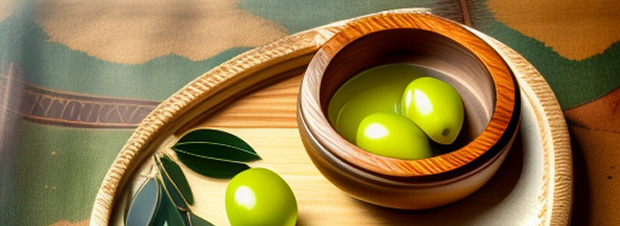
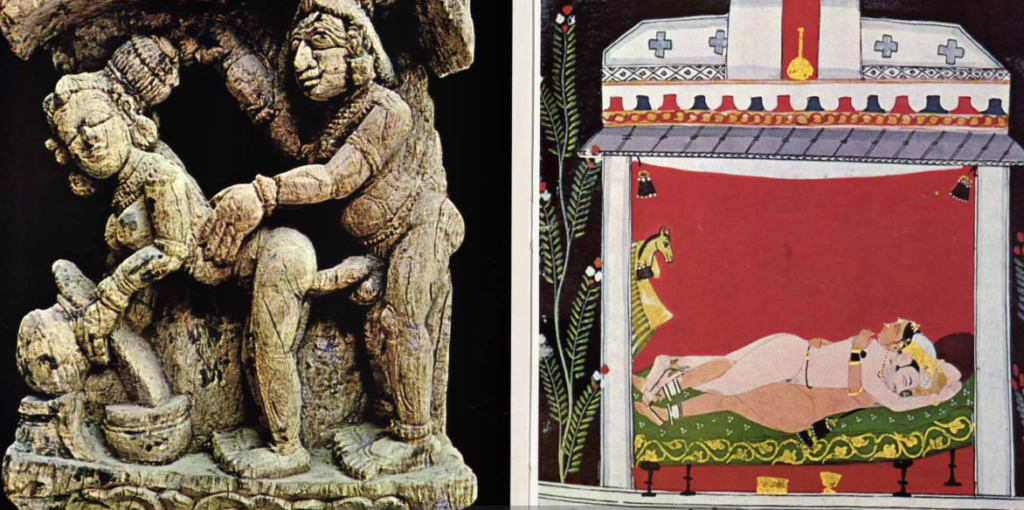
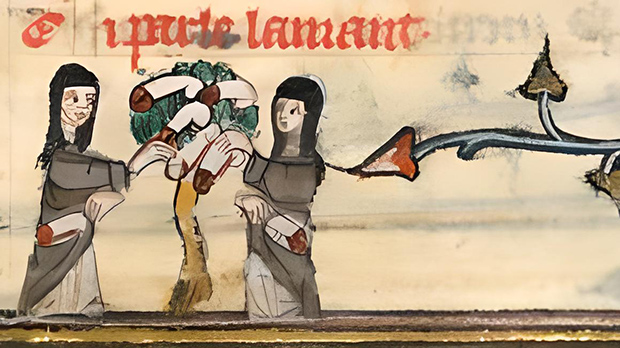

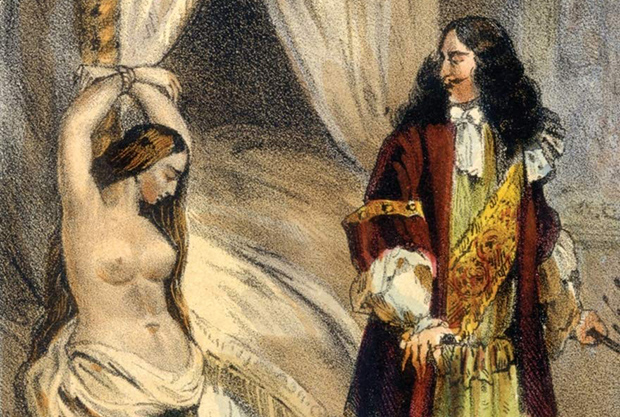
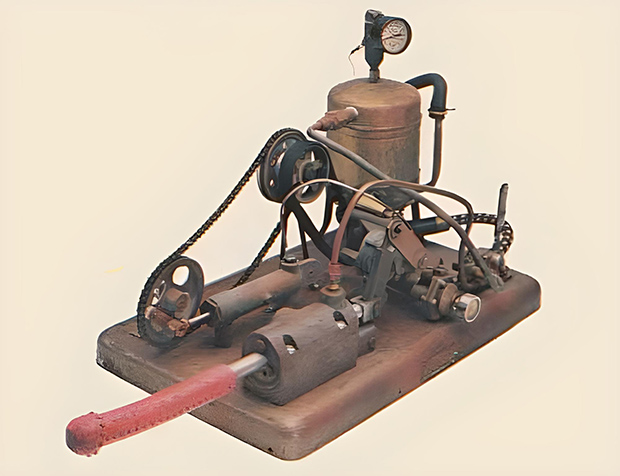
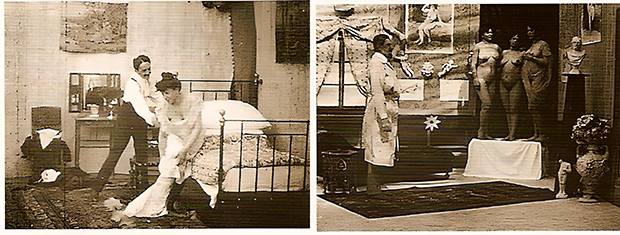
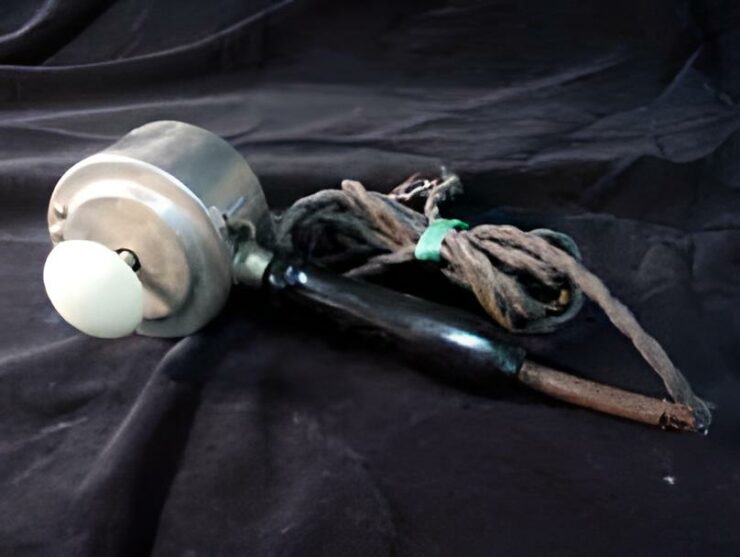
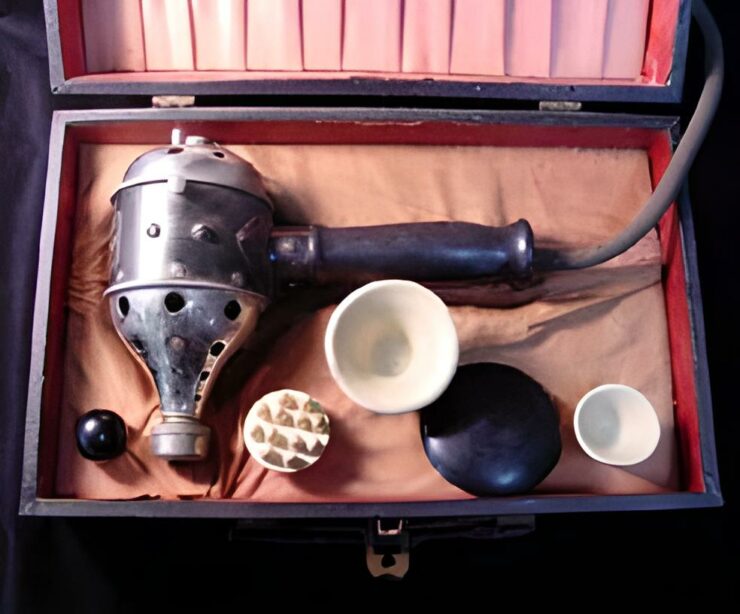
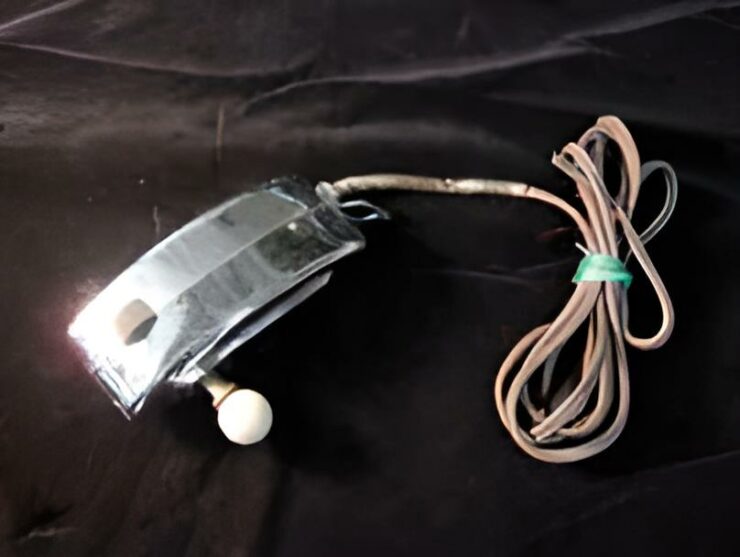
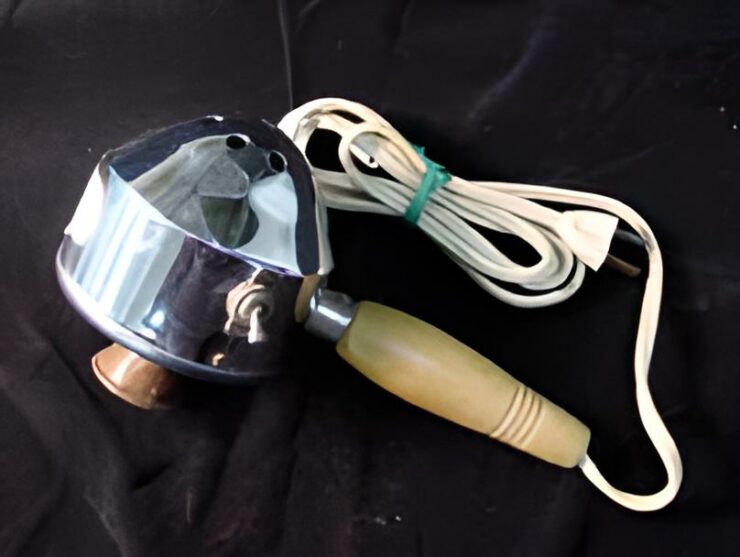
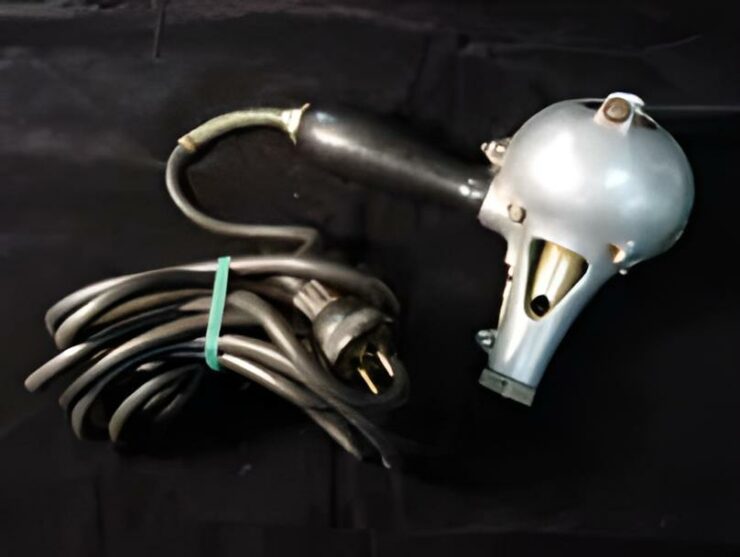
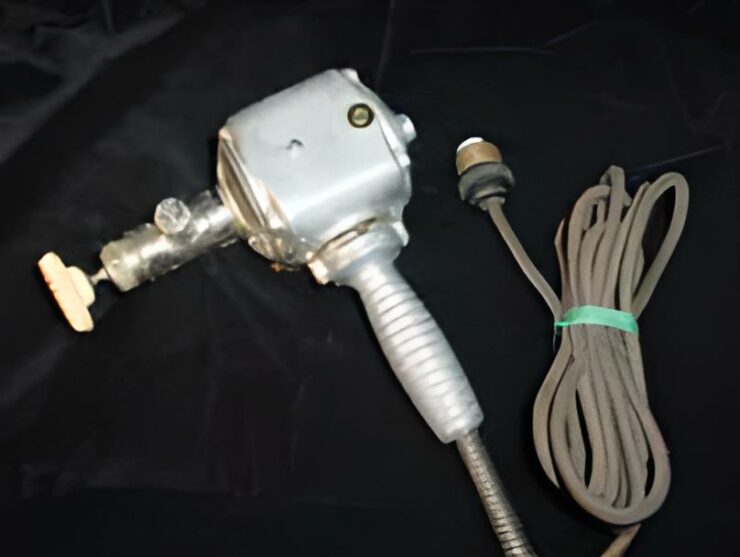
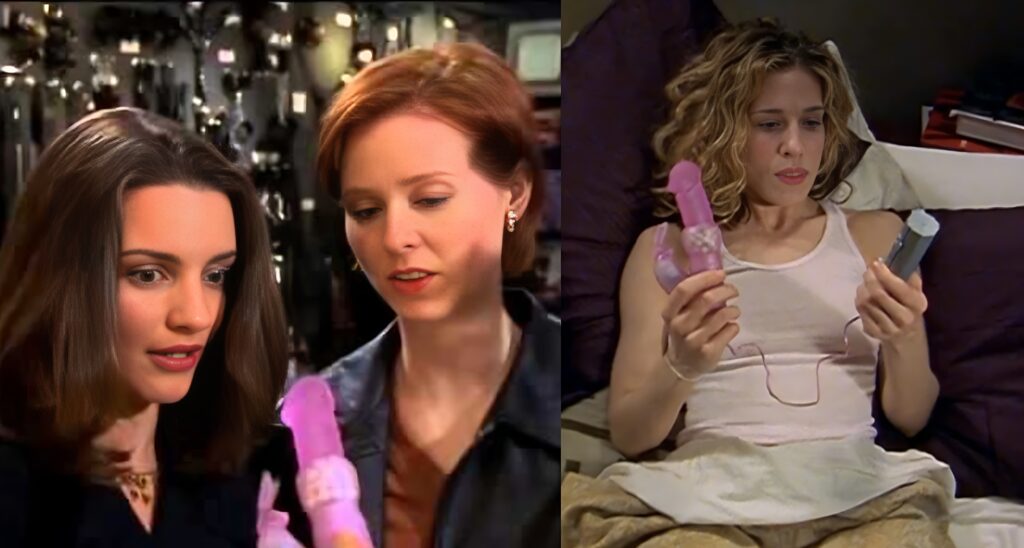
Add comment